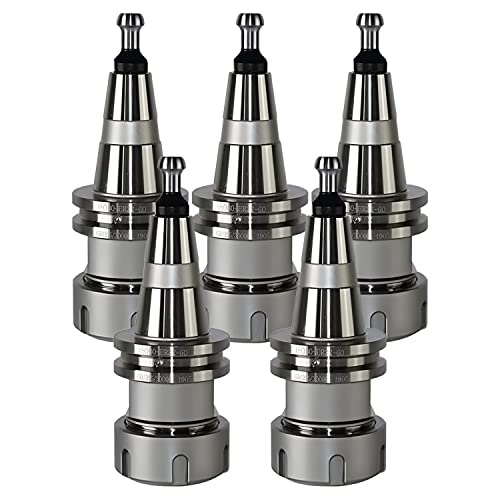@ShopShoe
Thanks very much for the detailed help. It's nice to see several folks jump in with their advice to help a newbie like myself.
We try to help! Just remember opinions are just that.
Regardless of my skill level with a lathe, it just bothers me that their is a built-in 'error' with the lathe.
Now this bothers me because all machines have built in errors. The lead on a Leadscrew isn't perfect even on fancy ground leadscrews. Now that isn't the same thing as putting inch calibrated dials on metric screws but if you are expecting perfect don't count on a leadscrew.
I understand the low price point and that you get what you pay for. The MicroLux 7x16 lathe makes a big deal out of the fact their lathe does not have this error and tuning their cross or compound screws are *always* accurate and correct.
One might call that exploiting the novice user.
By the way the Microlux is a very nice lathe and a considerable upgrade over the shorter bottom end machines. That however has more to do with other features than the dials and leadscrews.
But that lathe cost $800.00 USD. My Harbor Freight 7x12 cost half that amount.
As an owner of a HF 9x20 i fully understand what it is to buy the bargain basement machinery. At this point in my skills department there is little i can blame on the lathe itself accept for it being a bit small. It is the lathe operator that makes the machine work.
Anyway, I'm going to buy the kit from LMS for $60.00 that will 'fix' this problem on the mini-lathes:
https://littlemachineshop.com/products/product_view.php?ProductID=2383
You are free to do so but i don't see it solving any problems for you. In fact it might add to your frustration level.
I will also take everyone's advice and cut, measure, cut measure, etc.
Id strongly suggest spending some time on youtube with a focus on professional machinist like Adam Booth, Kieth Fenner and others doing one off machining jobs. Both of the guys mentioned are highly adept at lathe operation and are constantly measuring and adjusting based on those measurements.
To look at this another way, if you stick a new tool in the tool post where is that cutting tip in relation to the dials. The reality is you don't know so what good are those leadscrew dials at that point?
Another point to make is that Adam and Kieth are working on rather large and professional equipment, but equipment with wear. Neither one of them relies upon the dials for precise work. They resort to DROs, travel dials, or the use of dial indicators often held with magnetic bases.
So i have to repeat, I'm left with the feeling you are jumping the gun here. That $60 would be better spent on a decent magnetic backed dial indicator, a carriage stop ir a number of other things. Just my opinion.
I am the founder and admin of a mini laser forum (located here
www.BenboxLaser.us). We have a great community of folks who, like I'm finding out here, are eager and willing to help new folks with their specific hobby, no matter how dumb their questions might be or how confused they might be!
Remember there are no dumb questions. For the most part everyone here tries to be helpful but what is right or wrong is a matter of perspective. From my perspective you are reacting to a perceived problem that might have zero impact in reality.
Thanks again to everyone for the help!
No problem; it is great having new people here. Many of us are just starting to outfit our shops so we share common frustrations. One of those frustrations is the cost of tools which has us buying HF tools instead of new 10EE's. In the end we need to learn to get the most out of these challenged machines.











![DreamPlan Home Design and Landscaping Software Free for Windows [PC Download]](https://m.media-amazon.com/images/I/51kvZH2dVLL._SL500_.jpg)



















































![TurboCAD 2020 Designer [PC Download]](https://m.media-amazon.com/images/I/51UKfAHH1LL._SL500_.jpg)




